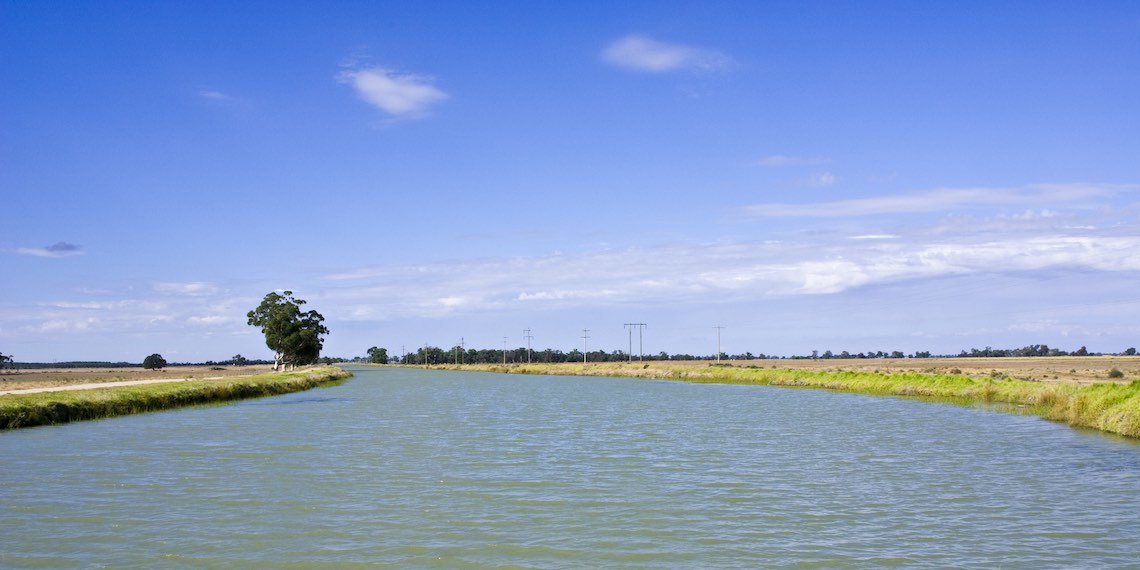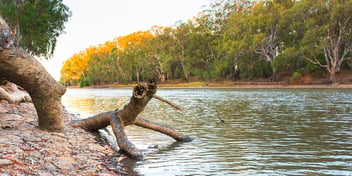New CRC set to support irrigated regions across Australia

As irrigated regions around Australia under a changing climate are pursuing more with less, the newly formed One Basin CRC has its sights set on bolstering collaboration in pursuit of more productive, resilient and sustainable regions.
Earlier this year, the Australian Government announced the One Basin Cooperative Research Centres (CRC) was successful in its application for a $50 million Commonwealth CRC Program grant. With 90 partners contributing $107m cash and in-kind resources over ten years, the One Basin CRC presents an exciting opportunity to work collaboratively to innovate for a changing future.
Grounded in collaboration and co-design, the CRC aims to create and assess new sustainable water and agricultural technologies, understand future opportunities and drive adoption by water and land managers to increase agricultural production, while improving environmental outcomes and maintaining meaningful involvement and engagement of First Nations peoples.
One Basin CEO Michael Stewardson said that as the Murray-Darling Basin (MDB) undergoes big changes in climate, markets, technologies and policy, there is widespread interest across sectors to come together to adapt cooperatively and grasp shared opportunities.
“In an arid region, water connects everyone, including the First Nations, agricultural communities, and the environment. And there are significant challenges and opportunities for the basin over the next decade and beyond,” he said.
“The uncertainty around the severity of impacts with climate change is a big challenge, but also ensuring environmental restoration and meaningful inclusion of First Nations in water resource systems.
“The need for new approaches in the face of these challenges is becoming more acute, and not only an issue for the MDB. Irrigation basins around Australia are facing similar hurdles. While the MDB takes a strong focus on our work at the CRC, we are keen to ensure the lessons and knowledge developed through the CRC are extended across Australia and beyond.
“And we believe collective effort will be crucial when it comes to implementing solutions.”
While the challenges are big, Stewardson said there are plenty of opportunities to grasp along the way, particularly if genuine collaboration is used effectively.
“There are lots of opportunities but collaboration is key. In the past two decades, we’ve learnt that when water is scarce, conflict in water management becomes particularly severe, making it very hard to build collaboration around evidence-based solutions,” he said.
“The 90 partners in the One Basin CRC have come together to lead a collaborative effort in getting ahead of these challenges, and to respond to emerging challenges in a collective way.”
Goals for One Basin
Stewardson said the One Basin CRC vision is for irrigated regions across Australia to be among the most sustainable, resilient and productive in the world.
“I'm not just talking about irrigated agriculture, I'm talking about the entire region, including the source catchment areas for those regions as well. We need to take a holistic systems approach,” he said.
“Working with our partners over the past three years to develop this CRC, we've come to learn that there are a lot of solutions and opportunities for innovation. But work is needed to support their adoption,” Stewardson said.
“While new solutions will undoubtedly be needed, the real challenge here is how to implement solutions on the ground, whether it be implementing new water management practices, technology use in irrigated agriculture, or new land and environmental practices.
“Importantly, the CRC is industry led, which means it is focused on overcoming barriers identified by our partners. Through our work in developing the bid, our partners identified three barriers in particular, which are addressed under our three research programs.”
Meeting challenges
The One Basin CRC programs have been designed to meet three overarching challenges on the path to achieving a more sustainable and resilient MDB, Stewardson said.
“The first challenge is there's been a disconnect between those who are producing solutions and those who are using solutions. Within our technology and opportunity program, we want to take a co-design approach where we include the end users in the design process for projects and the delivery of projects, as well,” he said.
“We are doing this work in regional areas in irrigation regions across the country, working in locations where these solutions will be applied, to ensure solutions are relevant and trusted.”
Stewardson said the second challenge is that increasing climate and water risks are a barrier to investment, which will be integral to achieving productivity gains.
“Through our foresight and decisions program, we will be developing codes, tools and processes for decision making that better incorporate climate risks and support more confident investment in adaptation activities,” he said.
“And the third major hurdle is that there is still a lot of siloing and fragmentation across players in the innovation and adaptation space. It's an issue across sectors, both private and public, and across supply chains and regions.
“The capability of a commercialisation program will respond to this challenge by leveraging our partnerships, which span across these domains, and build coalitions around some of these more complex shared challenges.”
An education and training program will address some of the new skills needed to support innovation across the basin. This includes internships, PhD students, a program to train future basin leaders, and vocational training to support the adoption of new technologies.
“The CRC has a strong focus on a place-based approach, with a commitment to delivering 75% of the program through four regional hubs located in Loxton, Mildura, Goondiwindi and Griffith in the first instance,” Stewardson said.
“Our regional hubs are key to the CRC approach and will be an important way to effectively connect with our industry partners. In addition, each hub will have a regional advisory committee that will provide advice on research priorities for their region.
Moving forward together
Stewardson said an advantage of the One Basin CRC is its focus on knowledge generation and capacity building.
“We are outside the pressure cooker of immediate management decision making,” he said.
“There's an opportunity for us to get all the players around the table, talk about opportunities and build some consensus around the strengths and challenges of different approaches moving forward.”
Furthermore, the increasing value of the water resources paves the way to continue investment in improved irrigation and water supply technologies, Stewardson said.
“Whether its new land management practices or environmental services around carbon and biodiversity, water management or water conservation, we have the opportunity to diversify economic activity in regional areas to make them more resilient by taking advantage of new business models and technology,” he said.
“We’re going to continue to see significant transitions in irrigated agriculture as water supply changes over the coming years. And with those transitions comes the opportunity to think about building resilient and sustainable irrigation regions.”


